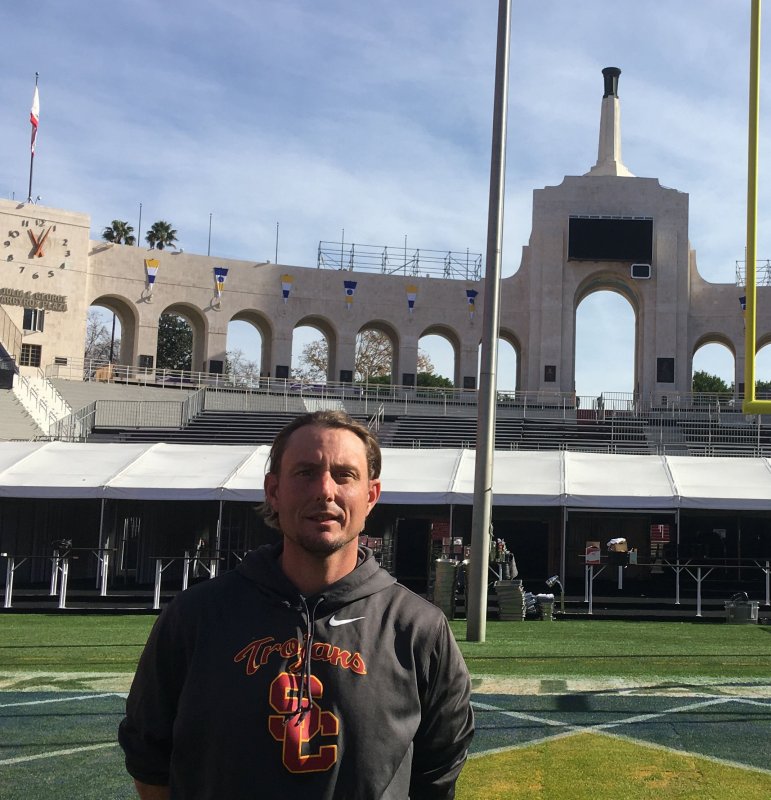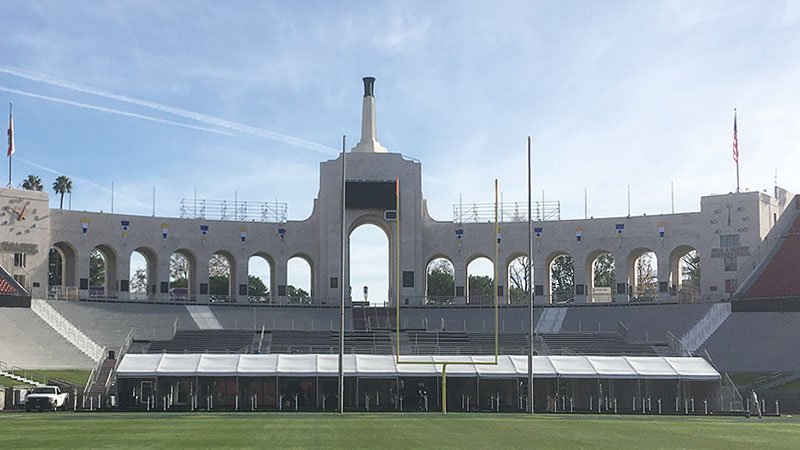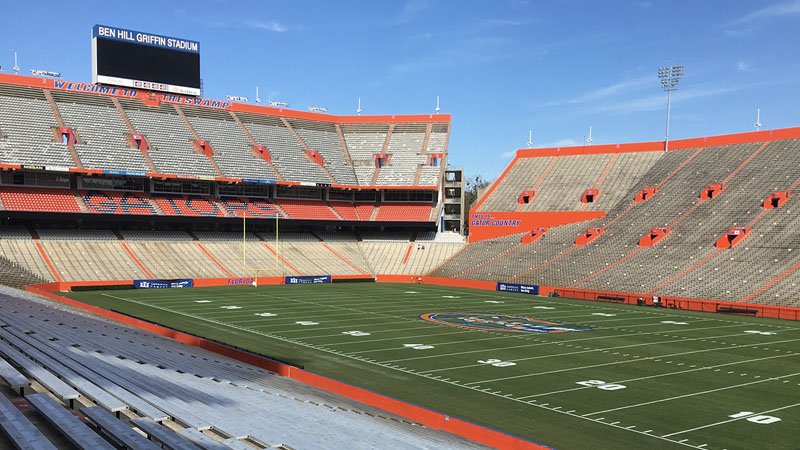This was supposed to be a year like so many others in the colorful history of the Los Angeles Memorial Coliseum. It has been anything but thanks to, well, you know.
In the shadows of Los Angeles skyscrapers for nearly 100 years, the L.A. Coliseum has a history like no other venue in sports.
 Since it was built in 1923 in the waning days of President Warren Harding's administration, the coliseum has been a venue for the 1932 and 1984 Olympics, was home to the NFL's Raiders and Rams and was the site of the Pro Bowl for more than two decades. Super Bowl I was played at the coliseum in 1967 and it is where the Miami Dolphins won Super Bowl VII to complete the NFL's only undefeated season.
Since it was built in 1923 in the waning days of President Warren Harding's administration, the coliseum has been a venue for the 1932 and 1984 Olympics, was home to the NFL's Raiders and Rams and was the site of the Pro Bowl for more than two decades. Super Bowl I was played at the coliseum in 1967 and it is where the Miami Dolphins won Super Bowl VII to complete the NFL's only undefeated season.
The Dodgers, yes the Dodgers, played in the coliseum for four seasons, and UCLA played its home football games there for nearly a half-century. Located next door to the University of Southern California, it has had a bit part in more than a dozen movies and TV shows and several commercials have been shot at the coliseum and countless concerts have been played behind its trademark peristyle. USC, which has fielded 11 national championship teams and seven Heisman Trophy winners, has played its home games at the coliseum since it was built 97 years ago.
Clearly, a lot has happened at the coliseum throughout its history, but for the past three months it has been as dormant as Bermudagrass in February.
Every day for almost four years, coliseum grounds manager Scott Lupold (right) has known exactly what event was coming next, and when it was coming.
With college football's future for the 2020 season uncertain, concerts canceled or postponed, corporate events on hold and a ban on film crews, Lupold knows he still has to keep the coliseum field ready. Ready for what and when? That's a different matter entirely.
"I'm still busy," Lupold said. "I just don't know what we're getting ready for."
The year started off like any other. New sod, Bandera Bermudagrass overseeded with ryegrass grown on plastic from West Coast Turf, was laid in February over a new sand-based field system that replaced the hardpan native soil medium that had existed pretty much since Day 1.
USC spring football and a music festival were first on the schedule. Another Bermuda sod field without the rye was to be put down in July in advance of USC's football season.
That was the plan, anyway.

"That field was only supposed to be here from February through June," Lupold said. "It's overseeded Bermuda that is heavy with rye, and that's what we wanted at the time.
"Now, we have to shift gears from promoting the ryegrass to getting this Bermudagrass going, because we might have to play on it. I was anticipating a new sod field in July, but it doesn't look like that is going to happen."
If there was one advantage golf course superintendents had over sports turf managers this spring was the near certainty that golf would bounce back just about everywhere long before other sports.
At the coliseum, as he naturally transitions from ryegrass to Bermuda, Lupold is breaking his schedule into three-week increments so he can have the field ready as quickly as possible when Los Angeles County reopens, which, according to public health officials, could be as soon as July 4.
"We're trying to do it naturally because we just don't know when we will be expected to have it right," Lupold said. "If I spray out the ryegrass and the Bermudagrass isn't coming in the way it should, and then I get a call that things are opening up and someone wants to get in here, then we could be in real trouble.
"We've been able to verticut once and lowered height of cut from 8 hundredths to .250 and now at about three-eighths, and we've gone from about 95 percent ryegrass to 60-40 ryegrass, and now we're in a decent spot. We can do any of our cultural practices and be back in three weeks, then reassess and go back at it. We are working in two-week to three-week increments. We're making strides, but we can't go too far."
At the University of Florida, sports turf manager Jason Smith thought he probably would be preparing the field at Katie Seashole Pressly Stadium for the NCAA College Softball Tournament Super Regionals. Instead, he and his team of seven have been busy getting ahead of schedule on about 17 acres of football, baseball, softball, soccer, lacrosse and track fields.
He remembers well the day of March 12, when the sports world came to a crashing halt.
Smith and his team were in the midst of baseball and softball season and were just getting ready to lay sod on the university's new baseball stadium.
"We had a baseball and a softball series that weekend, and we were just getting ready to sod the following Monday and Tuesday," Smith said. "We were kind of freaking out because we thought they were going to shut down the construction site, and I wanted to get that sod down. Our sod came from Pike Creek in Adel, Georgia and the contractor was from Georgia. We were afraid they might shut the roads down or limit travel. We kept plugging along, and nothing halted. It all worked out well for us getting the new field established."
In the early stages of the quarantine, each department in the university athletic association was asked to identify the bare minimum practices necessary to keep running.
"I told them I have to be able to mow Monday, Wednesday and Friday," he said.

"Then I started coming in at 4 (a.m.) and jumping on the aerifier, and I'd knock out 2 to 3 acres before the rest of the guys got in a 6. I made it around the fields aerifying and they came up behind me cleaning up. Then I rolled straight into verticutting. It was fun for me to come in early, throw in the ear buds and get some equipment time and not worry about meetings or phone calls."
At Ben Hill Griffin Stadium, the university's football facility known infamously as The Swamp, Smith typically would overseed the Celebration Bermudagrass in the fall for the last couple of games of the season. With only two home games in the last seven weeks of the 2019 schedule and a new stand of TifTuf, Smith skipped overseeding last year.
"I had a chance for the field to recover for the Vanderbilt game and another window of opportunity to get ready for Florida State in the last game of the season," Smith said.
"We're trying to set ourselves up for this season because we don't have to transition out of ryegrass."
If there is football. Schools have been cleared to bring players back to campus beginning June 1. Whether that occurs is up to each school and conference individually, but whether Florida or the Southeastern Conference will do so is likely, but has not yet been decided.
Although Smith is ahead of where he normally would be, the pace makes him feel like something is off.
"The way we're doing things takes longer, and it feels like we are behind, but we're not. We're doing things a lot earlier than usual," Smith said.
"Right now, we should be preparing for the softball super regionals. This should be the last weekend of postseason stuff at home, but we're already transitioned out, already had a round of aerification and verticutting. Look at where we'd normally be; we're way ahead of the game."

